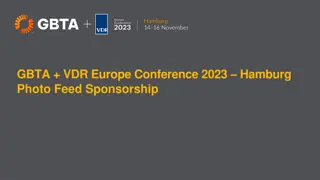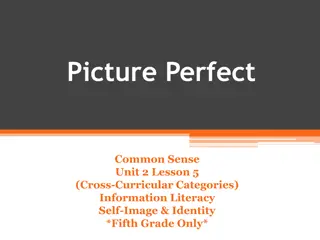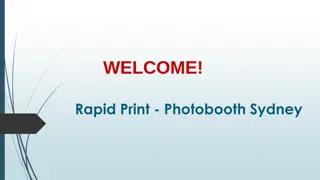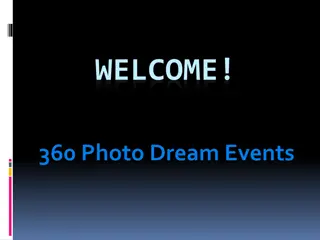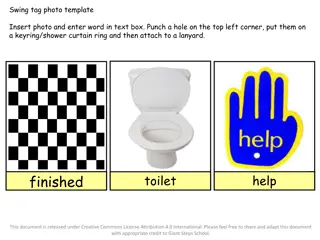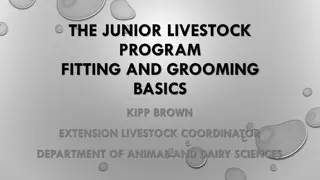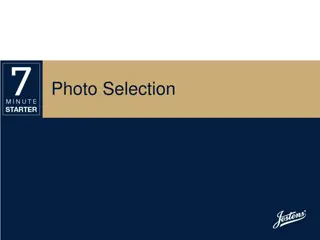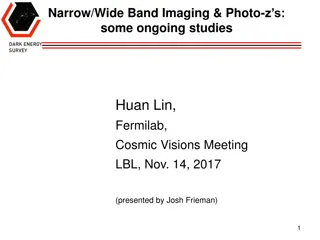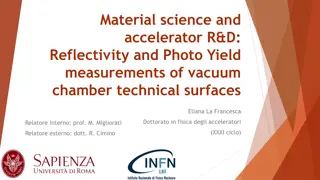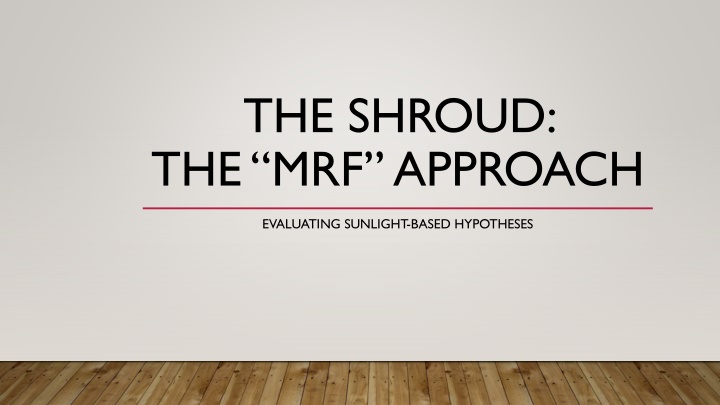
Approaching Sunlight-Based Hypotheses on the Shroud with MRF Method
Explore the Minimal Relevant Features (MRF) approach in evaluating sunlight-based hypotheses on the Shroud, focusing on key features like body image resolution, uniformity, 3D information, and more. The Proto-Photo hypothesis is discussed as one of the methods utilizing sunlight for image formation.
Download Presentation

Please find below an Image/Link to download the presentation.
The content on the website is provided AS IS for your information and personal use only. It may not be sold, licensed, or shared on other websites without obtaining consent from the author. If you encounter any issues during the download, it is possible that the publisher has removed the file from their server.
You are allowed to download the files provided on this website for personal or commercial use, subject to the condition that they are used lawfully. All files are the property of their respective owners.
The content on the website is provided AS IS for your information and personal use only. It may not be sold, licensed, or shared on other websites without obtaining consent from the author.
E N D
Presentation Transcript
THE SHROUD: THE MRF APPROACH EVALUATING SUNLIGHT-BASED HYPOTHESES
WHAT IS THE MRF APPROACH Similar to Gary Habermas Minimal Facts Approach , the Minimal Relevant Features approach to studying the Shroud utilizes features/facts that ought to be persuasive to reasonable unbelievers and then applies BEI criteria to evaluate various image-forming hypotheses (Proper Facts + Method). There are 3 fundamental requirements for identifying the features/facts used in evaluating hypotheses; i) The feature in question is highly evidenced (Qualifies as a Type A/B or a Class1 Level fact) [i.e., refers to unquestionable or confirmed observations or conclusions made on the basis of a primary peer-reviewed studies or on a proof made in reference to credible TS studies] ii) Scholarly Consensus (2/3rds or more of qualified Shroud scholars accept the fact/feature). iii) The feature is necessary for the success of my overall argument. Note: To avoid any selection biases, I also include any and all probable Counter-Features .
RELEVANT EXAMPLES OF MRFS 1. Body Image High Resolution: The body image has a resolution of 4,9 0,5 mm at the 5% MTF value (for example the lips); the resolution of the bloodstains is at least ten times better (for example the scratches in the scourge wounds). 2. Body Image Uniformity: Each fibril is coloured individually and uniformly. 3. 3D /Topographical Information: The image-density distribution of both front and back images can be correlated to the distance between an object having the shape and contours of a human body and a cloth covering that body. 4. Full-Length Vertically-Collimated Body Images: The body images are continuous (uninterrupted) and the mapping of image features from the body to the cloth of the frontal image is more or less vertical, corresponding to the direction of gravity. 5. Body Image Superficiality: Direct microscopy showed that the image color resides only on the topmost fibers at the highest parts of the weave (top 2-3 fibers of a thread) & further at the fiber level the image is superficial in the sense that the color alteration of the fiber is restricted to chemical changes in the approximately 200 nm thick external cell layer [i.e. the thin impurity layer on the outer surfaces of the Primary Cell Wall].
RELEVANT EXAMPLES OF MRFS 6. No Body Images Underneath Bloodstains: The areas at the boundary between the colored image-bearing fibers and bloodstains, wounds and associated serum retraction rings revealed that there was no image beneath the blood or the blood serum at the boundary of the tested bloodstains; the image color was found to terminate consistently at the boundary of the bloodstains and/or serum retraction rings. 7. No Photo-Sensitizers or Silver: There are no detectable traces of photo sensitizers related to silver salts and/or silver nitrate emulsions on the Shroud images.
THE PROTO-PHOTO HYPOTHESIS The Proto-Photo hypothesis is one of three types of methods that utilize sunlight to create the images on the Shroud Such methods. Sunlight-based mechanisms can be broken up into 3 main types of artistic techniques; i) The Proto-Photographic (proper) method, ii) The Shadow Method and iii) The Solar Reflex Model. The Proto-Photo hypothesis theorizes that the images could have been formed by placing a standing body/statue in the sunlight directly across from a linen cloth (which had been previously coated in some kind of photo sensitive solution) on the wall of a dark room or cave, then using a lens (equidistant from the body and the cloth), the images would be encoded onto the Shroud; this technique is known to history as the camera-obscura technique. During the 1990 s, there were 2 major attempts to reproduce the Shroud using Proto-Photo methods; the first was conducted by Lynn Picknett and Clive Prince, while the latter was conducted by Professor Nicholas Allen (the latter of which is the best of this method). [Show Allen s 3 minute video clip = https://www.youtube.com/watch?v=s-jENDPF8UE & Show the Method Image = http://theshroudofturin.blogspot.com/2016/08/medieval-photography-nicholas-allen.html ].
PROTO-PHOTO DETAILED STEPS All Proto-Photo theories essentially have the same basic procedural outline; i) A linen cloth was treated with various photo-sensitizing substances to make the cloth sensitive like a photographic film, ii) A body and/or statue was placed in the sunlight across from a linen cloth which was stretched flat and placed in a dark room (or cave) several feet away from the body; a lens, being equidistant between the two objects is then put in place to focus and direct the sunlight onto the cloth, iii) The frontal image was captured first, iv) The set-up was changed to capture the dorsal image second, v) The set-up was changed again to separately capture facial and/or other images that could not be captured the first time, and vi) The cloth was then washed to remove any residual photo-sensitizing substances after the images had become fixed .
EVALUATING THE PROTO-PHOTO METHOD 1. High Resolution: Nicholas Allen s images have a high-resolution that is superior to those found on the Shroud; they have the actual realism of a modern photograph- easily distinguished from the Shroud image. 2. Body Image Uniformity: Proto-Photo cannot explain the uniform intensity of each fibril; STURP photographer Barrie Schwortz notes that there are obvious signs of shadowing effects on Allen s images which the Shroud lacks and this would also apply to all such photographic processes in general. There are also obvious bright spots where the image intensity does not match the rest of the image (such as with the nose for example). 3. 3D Images: All Proto-Photo methods inherently employ frontal illumination which is unable to reproduce the subtle lighter and darker areas of the Shroud that can be correlated to distance between a body and a covering cloth. STURP scientist Alan Adler bluntly stated that Allen s image is an albedo image and will thus fail a VP-8 test .
EVALUATING THE PROTO-PHOTO METHOD 4. Full-Length Vertically-Collimated Body Images: The Proto-Photo mechanisms are inherently unable to account for the vertically mapped wrapping distortions due to the fact that the cloth is postulated to be stretched flat, so there is no geometrical interaction between the cloth and a body to be translated into wrapping distortion information. There is only the interacting of light with a flat cloth. 5. Body Image Superficiality: Barrie Schwortz has chastised Proto-Photo Nicholas Allen for using various light sensitive emulsions [which] would have to be coated onto the entire Shroud in a semi-viscous liquid or gelatine form, which [in turn] would have penetrated deep into the fibers of the cloth. Such methods involves treating a cloth with silver nitrate to make the cloth sensitive to light like a photographic film. A silver nitrate emulsion, or really any emulsion, applied to a cloth would be pulled into the cloth by capillary flow/action and thus would sensitize more than a micro-thin surface. A cloth is simply not like the solid surface of a photographic film
EVALUATING THE PROTO-PHOTO METHOD 6. No Body Images Underneath Bloodstains: The use of photo sensitizers would likely have caused major damage/alteration to the bloodstains had they been encoded onto the Shroud first. However, had the bloodstains been added subsequently, there should be evident body images underneath the bloodstains on the Shroud. 7. No Photo-Sensitizers or Silver: Since the primary light sensitive material used in the photographic process is silver, the STURP team looked for this compound using detailed spectral and chemical analyses and not one trace was found. According to proponents of that theory, all the silver was removed during the fixing process. However, the chemicals used to fix the image and make it permanent only remove the unused silver, so there would be plenty of it still remaining in the body image areas.
IS THE PROTO-PHOTO HYPOTHESIS THE BEST EXPLANATION? Plausibility; The hypothesis must be implied by or at least consistent to a greater degree and by a greater number/variety of other accepted truths (or background knowledge) than other hypotheses; A) No known examples of this method in all of artistic history apart from the Shroud. B) No such known techniques ever utilized a lens until the 1550 s, when a mathematician first suggested replacing the simple hole with an actual lens. C) All such methods necessarily entail using technology and techniques that we know were not available until the 19thcentury. For example, i) optical quality quartz lenses are made by heating quartz to about 3500 degrees Fahrenheit yet furnaces were not able to reach such high temperatures until the Industrial Revolution, ii) the quartz would have to be clear and very large in order to craft a lens with the specific dimensions needed for this technique, unfortunately quartz crystals of this size were extremely rare and the most abundant supply of them were in the Western Hemisphere (which obviously did not export them during the Middle Ages) and, iii) The artist would then have to precisely curve and mold by hand, the quartz into a lens in the shape of a convex curve without any imperfections- the slightest error would prevent the high-resolution observed on the Shroud. D) Allen admits that the only plausible solutions for a photo-sensitizing agent must pertain to either silver nitrate or silver sulfite; however even he could only document the use of silver chloride during the Middle Ages- a solution that is completely useless for this type of technique
IS THE PROTO-PHOTO HYPOTHESIS THE BEST EXPLANATION? Explanatory Scope; This criterion accounts for the quantity of facts (Shroud s Minimal Relevant Features ) that can be accounted for by a given hypothesis/hypotheses; the hypothesis that includes the most relevant data has the greatest explanatory scope; A) Proto-Photo theories cannot create an entire image without requiring multiple attempts fitted together; this produces unnatural looking images when compared with the Shroud s images, which were formed in their entirety on each side at the same time. Explanatory Power; This criterion looks at the quality of the explanation/hypothesis in relation to explaining the relevant facts. The hypothesis that explains the data with the least amount of effort, vagueness or ambiguity has the greater explanatory power; A) Proto-Photo methods fail to explain multiple MRF s of the Shroud s images and there is ambiguity in the ability of an artist utilizing a dead body (vs. a statue as Allen does) over an extended period of time to produce the desired effects.
IS THE PROTO-PHOTO HYPOTHESIS THE BEST EXPLANATION? Simplicity; A hypothesis employs ad hoc components when it employs non-evidenced assumptions, the superior hypothesis is one that employs the least amount of non-evidenced assumptions. A) Shroud sceptic Joe Nickell complains, Allen proposes that the medieval forger actually invented photography I suggest that after the forger invented all this technology which went unused and unknown for the next nearly five centuries he could have invented the telephone and talked with others about it. Then he could have invented the automobile and driven to the Riviera for a much-needed rest. With his absurd explanation of the shroud s image, Nicholas Allen has played into the hands of shroud propagandists . Shroud activists are no doubt laughing all the way to the cathedral . B) One might compare Allen s positing a medieval modern photograph using the mere historical scraps of information regarding the camera obscura method to the example once made by the famous scientist Freeman Dyson; who said, even if we have all the materials needed to make spacecrafts capable of leaving our galaxy all around us today on Earth, that wouldn t mean that a student living 1000 years from now would be any less a fool in concluding that we could actually make such vessels in the 20thcentury; such spacecraft simply do not fit into the milieu of the 20thnor early 21stcenturies . Likewise, modern photography just doesn t fit the milieu of the mid-14thcentury!!!
NEXT TIME: THE SHADOW HYPOTHESIS Nathan D. Wilson (a former student of Dr. Gary Habermas) believed that Nicholas Allen s Proto-Photo method reinforced his own notion that sunlight must have played a role in the production of the Shroud images, he claimed we are both attempting to create a photo negative by means of sunlight . Wilson s method uses a raw linen cloth (i.e. the Shroud) that is uniformly aged to simulate the maximum image intensity and color of the Shroud image. Then using a painted piece of glass whereby the painted image on the glass casts a shadow onto the cloth, proportionally with the density of the paint applied on the glass, those corresponding areas on the cloth are thus protected from the effects of the sun beneath the painted image on the glass. In effect then, the use of the shadow in the image is not used to create the images themselves directly but to protect an already colored cloth while the sun does its work to bleach the rest of the unprotected (or unshadowed ) cloth.


